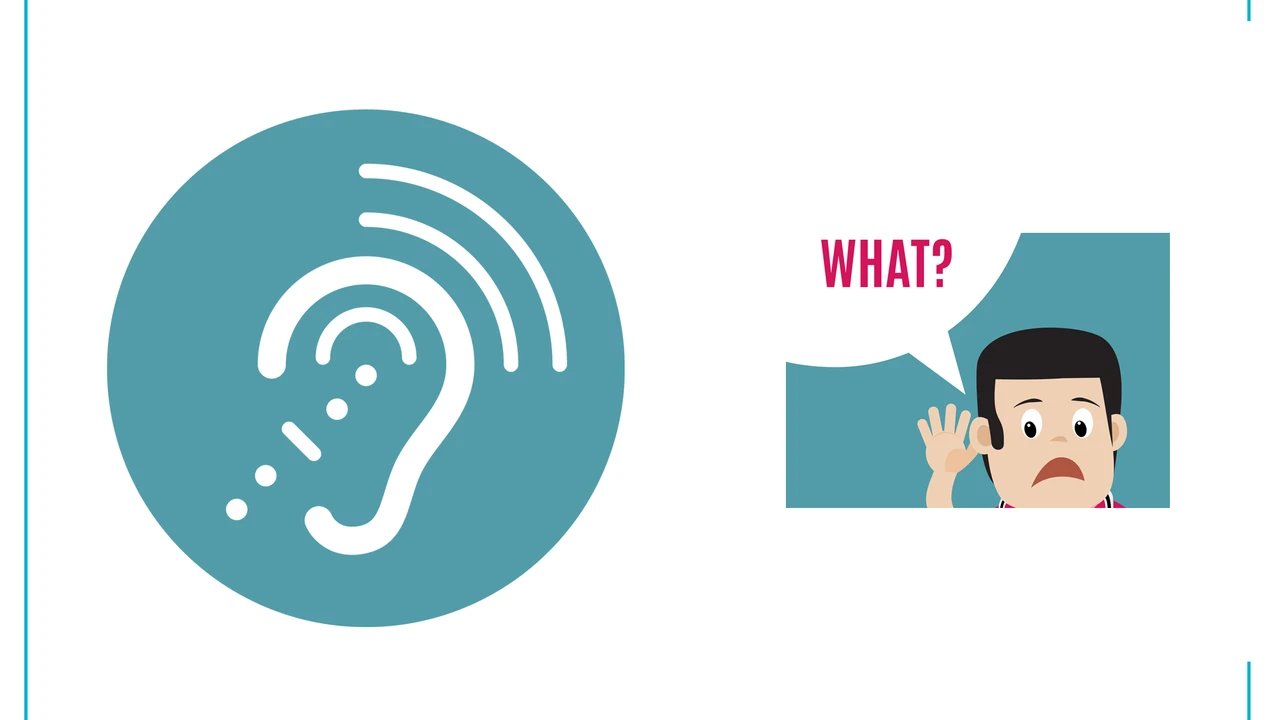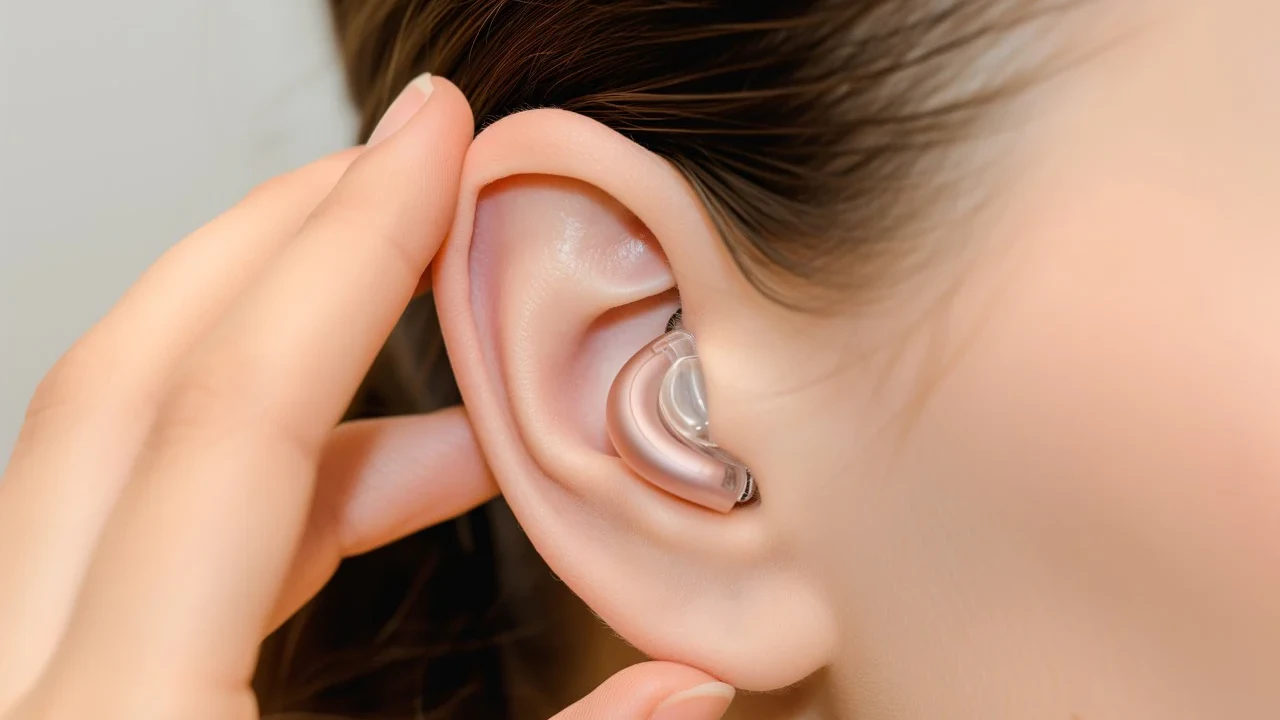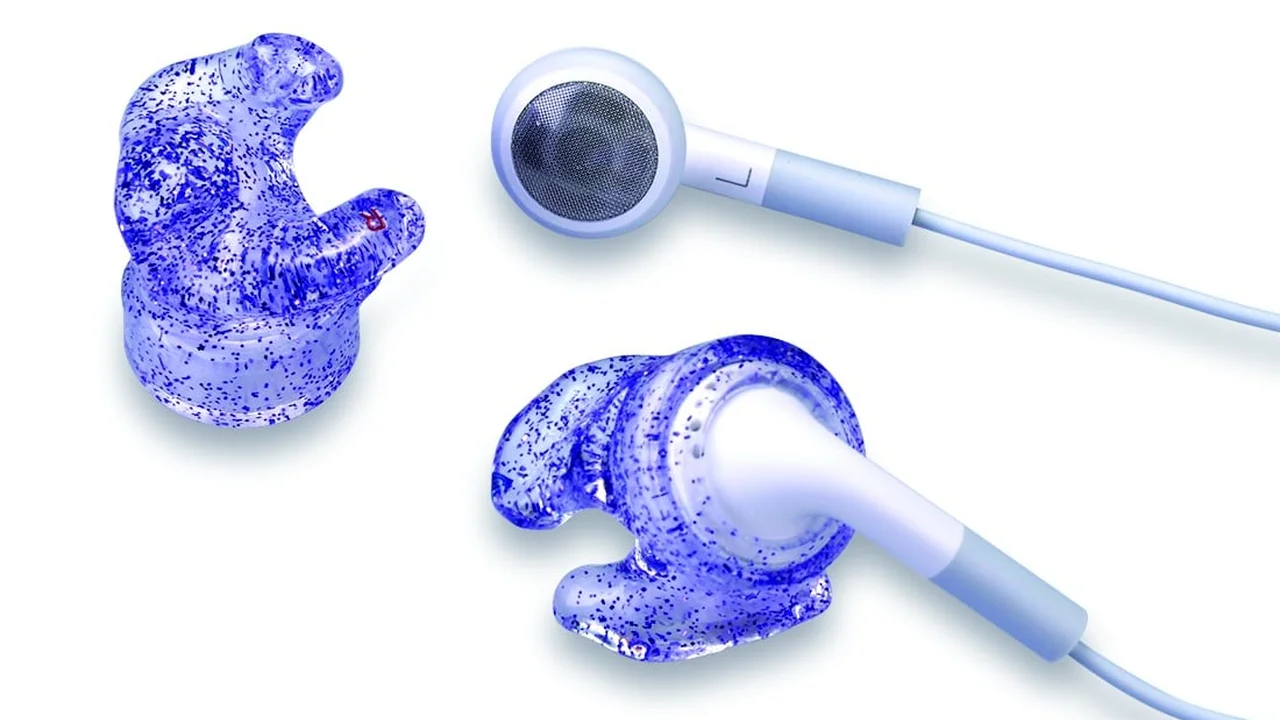Autoimmune Inner Ear Disease Understanding AIED
Learn about Autoimmune Inner Ear Disease (AIED), its symptoms, diagnosis, and treatment options for this rare form of progressive hearing loss.

Autoimmune Inner Ear Disease Understanding AIED
What is Autoimmune Inner Ear Disease AIED Explained
Hey there! Let's talk about something a bit less common but super important for some folks: Autoimmune Inner Ear Disease, or AIED for short. Imagine your body's immune system, which is usually your best friend fighting off germs, suddenly gets a little confused and starts attacking parts of your inner ear. That's essentially what AIED is. It's a rare condition where your immune system mistakenly identifies components of your inner ear as foreign invaders and launches an attack, leading to inflammation and damage. This can result in progressive, often fluctuating, and usually bilateral (affecting both ears) sensorineural hearing loss. Sometimes, it can also cause dizziness or vertigo, making it a really challenging condition to live with.
AIED is considered a subset of autoimmune diseases, which include conditions like rheumatoid arthritis, lupus, and Sjogren's syndrome. While it can occur in isolation, meaning it's the only autoimmune disease a person has, it's also frequently associated with other systemic autoimmune disorders. This connection is why doctors often look for other autoimmune markers when diagnosing AIED. The exact prevalence of AIED is hard to pin down because it's so rare and often misdiagnosed, but it's estimated to account for less than 1% of all cases of hearing loss. However, it's a significant cause of rapidly progressive hearing loss that can be treated, so early and accurate diagnosis is crucial.
The inner ear is a delicate and complex structure, housing both the cochlea (responsible for hearing) and the vestibular system (responsible for balance). When the immune system attacks these structures, it can lead to a range of symptoms. The inflammation can damage the hair cells in the cochlea, which are vital for converting sound vibrations into electrical signals that the brain can interpret. It can also affect the nerve fibers themselves. Because the immune response can fluctuate, so too can the symptoms, making it a frustrating and unpredictable condition for those affected.
Recognizing AIED Symptoms Early Detection Matters
So, how do you know if you or someone you know might be dealing with AIED? The symptoms can be a bit tricky because they often mimic other types of hearing loss. However, there are some key characteristics that can point towards AIED. The most common symptom is a rapidly progressive sensorineural hearing loss. This isn't your typical age-related hearing loss that slowly creeps up over years; with AIED, the hearing loss can worsen significantly over weeks or months. It often affects both ears, though one ear might be affected before the other, or one might be worse than the other.
Beyond just hearing loss, many people with AIED also experience other inner ear symptoms. Tinnitus, that annoying ringing, buzzing, or hissing sound in the ears, is very common. Dizziness, vertigo (a sensation of spinning), and imbalance can also be prominent, indicating that the vestibular system is also under attack. Some individuals might also report a feeling of fullness or pressure in the ear. What's particularly characteristic of AIED is the fluctuating nature of these symptoms. One day your hearing might be a bit better, the next it could be worse, which can be incredibly disorienting and frustrating.
Because AIED can sometimes be associated with other autoimmune diseases, a doctor might also look for systemic symptoms. These could include joint pain, fatigue, skin rashes, or other signs of a broader autoimmune condition. It's important to communicate all your symptoms to your doctor, even those that don't seem directly related to your ears, as they can provide valuable clues for diagnosis. Early detection is super important because AIED is one of the few types of sensorineural hearing loss that can be treated, and prompt treatment can often preserve existing hearing and prevent further loss.
Diagnosing Autoimmune Inner Ear Disease The Process
Diagnosing AIED isn't always straightforward, as there isn't one single definitive test. It's often a diagnosis of exclusion, meaning doctors rule out other causes of hearing loss first. The diagnostic process usually involves a combination of detailed medical history, physical examination, audiological tests, and blood tests.
Audiological Testing for AIED
First up, you'll likely undergo a comprehensive audiological evaluation. This includes pure-tone audiometry to measure your hearing thresholds at different frequencies, speech audiometry to assess your ability to understand spoken words, and tympanometry to check your middle ear function. The audiogram in AIED typically shows a sensorineural hearing loss, often affecting the higher frequencies first, but it can vary. What's key here is the rapid progression and often bilateral nature of the loss.
Blood Tests and Autoimmune Markers
Next, your doctor will probably order a series of blood tests. These tests look for specific antibodies and inflammatory markers that are often elevated in autoimmune diseases. Some of the common tests include:
- ESR (Erythrocyte Sedimentation Rate) and CRP (C-Reactive Protein): These are general markers of inflammation in the body.
- ANA (Antinuclear Antibody): A common test for systemic autoimmune diseases like lupus.
- Rheumatoid Factor (RF): Often elevated in rheumatoid arthritis.
- Anti-HSP70 (Heat Shock Protein 70) antibodies: While not universally accepted, some research suggests these antibodies might be specific to AIED.
- Anti-cochlear antibodies: These are antibodies specifically targeting inner ear proteins, but their reliability and availability can vary.
It's important to note that not everyone with AIED will have positive blood tests, and conversely, some people with positive markers might not have AIED. The blood tests are just one piece of the puzzle.
Other Diagnostic Tools for AIED
Sometimes, other tests might be used to rule out other conditions. For instance, an MRI of the brain and inner ear might be performed to exclude tumors or other structural abnormalities. Vestibular tests, like electronystagmography (ENG) or videonystagmography (VNG), might be done if dizziness or vertigo is a prominent symptom, to assess the function of your balance system.
Ultimately, the diagnosis of AIED is often made based on a combination of a characteristic clinical presentation (rapidly progressive, fluctuating, bilateral sensorineural hearing loss, sometimes with vestibular symptoms), the exclusion of other causes, and a positive response to immunosuppressive therapy. It's a complex process that often requires the expertise of an otolaryngologist (an ENT doctor) and sometimes a rheumatologist.
Treatment Options for AIED Managing Your Hearing
The good news about AIED, despite its challenges, is that it's one of the few types of sensorineural hearing loss that can be treated with medication. The primary goal of treatment is to suppress the immune system's attack on the inner ear, reduce inflammation, and preserve as much hearing as possible. Early intervention is key to achieving the best outcomes.
Corticosteroids The First Line of Defense
The cornerstone of AIED treatment is corticosteroids, most commonly prednisone. These powerful anti-inflammatory and immunosuppressive drugs work by calming down the overactive immune system. They are usually prescribed in high doses initially, often as an oral medication, and then gradually tapered down over several weeks or months. Many patients experience significant improvement in their hearing, or at least a stabilization of their hearing loss, with corticosteroid treatment. However, long-term use of high-dose steroids can have side effects, so doctors aim to find the lowest effective dose or transition to other medications.
Immunosuppressants for Long Term Management
For patients who don't respond well to steroids, or who experience significant side effects, or who require long-term treatment, other immunosuppressive medications might be used. These can include drugs like methotrexate, cyclophosphamide, azathioprine, or mycophenolate mofetil. These medications work in different ways to suppress the immune system and can help maintain hearing stability. They are often used in conjunction with or as an alternative to corticosteroids, especially for chronic or relapsing cases. Biologic agents, which target specific parts of the immune system, are also being explored as potential treatments for AIED, though they are less commonly used at present.
Other Supportive Treatments for AIED
Beyond medication, other supportive treatments are crucial for managing AIED:
- Hearing Aids: For many individuals with AIED, even with successful medical treatment, some degree of hearing loss may persist. Hearing aids become invaluable in these cases. They amplify sound, making it easier to hear and understand speech. Given the fluctuating nature of AIED, hearing aids with advanced features like automatic adjustments to different sound environments and excellent noise reduction can be particularly beneficial.
- Cochlear Implants: If the hearing loss progresses to severe or profound levels despite medical treatment, and hearing aids no longer provide sufficient benefit, a cochlear implant might be an option. Cochlear implants bypass the damaged parts of the inner ear and directly stimulate the auditory nerve, providing a sensation of sound.
- Vestibular Rehabilitation: If dizziness or vertigo is a significant symptom, vestibular rehabilitation therapy can be very helpful. This involves a series of exercises designed to help your brain compensate for inner ear dysfunction and improve balance.
- Tinnitus Management: For persistent tinnitus, various strategies can help, including sound therapy (using white noise or other sounds to mask the tinnitus), cognitive behavioral therapy (CBT), and sometimes specific hearing aid features designed for tinnitus relief.
Managing AIED is often a long-term journey that requires close collaboration between the patient, an ENT specialist, an audiologist, and sometimes a rheumatologist. Regular monitoring of hearing and overall health is essential to adjust treatment as needed.
Living with AIED Practical Tips and Support
Living with a chronic and fluctuating condition like AIED can be challenging, but there are many strategies and resources to help you manage it effectively and maintain a good quality of life. It's all about being proactive and building a strong support system.
Communication Strategies for AIED
Even with hearing aids or cochlear implants, communication can sometimes be tough, especially in noisy environments or when your hearing fluctuates. Here are some tips:
- Inform Others: Let your family, friends, and colleagues know about your hearing loss and AIED. Explain that your hearing can fluctuate and that you might need them to speak clearly or repeat themselves.
- Face the Speaker: Always try to face the person you're talking to. This allows you to use visual cues like lip-reading and facial expressions, which can significantly aid understanding.
- Choose Quiet Environments: When possible, opt for quieter settings for conversations. If you're in a restaurant, ask for a table away from the kitchen or loud music.
- Use Assistive Listening Devices (ALDs): Beyond hearing aids, ALDs like personal FM systems or remote microphones can be incredibly helpful in challenging listening situations, such as lectures, meetings, or noisy family gatherings.
Managing Dizziness and Balance Issues with AIED
If AIED affects your balance, these tips can help:
- Vestibular Rehabilitation: As mentioned, this therapy is excellent for improving balance and reducing dizziness.
- Safe Environment: Make your home safe by removing tripping hazards, ensuring good lighting, and installing grab bars if needed.
- Slow Movements: Avoid sudden head movements that can trigger dizziness.
- Stay Hydrated: Dehydration can sometimes worsen dizziness.
Emotional and Psychological Support for AIED
Dealing with a fluctuating and potentially progressive hearing loss can take a toll on your mental and emotional well-being. It's okay to seek support:
- Support Groups: Connecting with others who have AIED or other forms of hearing loss can be incredibly validating and provide practical advice.
- Counseling: A therapist or counselor can help you process the emotional impact of AIED, develop coping strategies, and manage any anxiety or depression.
- Educate Yourself: The more you understand about AIED, the better equipped you'll be to manage it and advocate for your needs.
Regular Medical Follow-ups for AIED
Consistent follow-up with your ENT specialist and audiologist is paramount. This allows them to monitor your hearing, adjust your medication as needed, and ensure your hearing aids are optimally programmed. Don't hesitate to report any changes in your symptoms or side effects from medication.
Recommended Hearing Aids for AIED Enhancing Your Listening Experience
When it comes to hearing aids for AIED, the best choice often depends on the severity and fluctuating nature of your hearing loss, as well as your lifestyle and specific needs. Since AIED can cause significant and sometimes profound hearing loss, powerful devices with advanced features are often recommended. Here are some top contenders and what makes them suitable:
1. Phonak Naída Paradise P90 UP Ultra Power Hearing Aid
Why it's great for AIED: The Phonak Naída Paradise P90 UP is designed for severe to profound hearing loss, making it an excellent choice if your AIED has significantly impacted your hearing. 'UP' stands for Ultra Power, meaning it delivers robust amplification. It features Phonak's Paradise platform, known for its crisp natural sound and brilliant speech understanding. This is crucial for AIED patients who might struggle with clarity due to inner ear damage.
Key Features:
- Powerful Amplification: Handles severe to profound hearing loss effectively.
- Speech Enhancer: Boosts soft-level speech in quiet environments.
- Dynamic Noise Cancellation: Reduces background noise, which is vital for fluctuating hearing in challenging environments.
- Universal Bluetooth Connectivity: Connects to virtually any Bluetooth-enabled device, including smartphones, for streaming calls and audio.
- Tap Control: Answer calls, pause/resume streaming, and activate voice assistant with a simple tap.
- Rechargeable Option: Offers convenience and eco-friendliness.
Use Cases: Ideal for individuals with significant hearing loss from AIED who need powerful amplification and excellent speech clarity in various listening situations, from quiet conversations to noisy social gatherings. The robust connectivity is great for staying connected to digital devices.
Estimated Price: Typically ranges from $2,500 - $4,000 per aid, depending on the provider and included services.
2. Oticon More 1 MiniRITE R Advanced Sound Processing
Why it's great for AIED: Oticon More hearing aids are unique because they use a Deep Neural Network (DNN) trained with 12 million real-life sound scenes. This allows the hearing aid to process sound more like the brain, giving you access to all relevant sounds, not just speech, in a balanced way. For AIED patients, who might experience fluctuating hearing and difficulty processing complex soundscapes, this 'MoreSound Intelligence' can provide a richer and more natural listening experience, helping the brain adapt better.
Key Features:
- MoreSound Intelligence: Provides a 360-degree sound experience, giving the brain more information to work with.
- Deep Neural Network (DNN): Processes sound in a highly intelligent and adaptive way.
- Tinnitus SoundSupport: Offers relief for tinnitus, a common symptom of AIED.
- Direct Streaming: Connects directly to iPhone and select Android devices.
- Rechargeable: Convenient and long-lasting battery.
- BrainHearing Technology: Supports the brain's natural way of processing sound.
Use Cases: Excellent for AIED patients who desire a more natural and immersive sound experience, especially in complex and dynamic environments. The tinnitus support is a significant plus. Suitable for mild to severe hearing loss.
Estimated Price: Ranges from $2,800 - $4,500 per aid, depending on the technology level and provider.
3. ReSound ONE 9 Micro RIC 312 Enhanced Spatial Awareness
Why it's great for AIED: The ReSound ONE introduces a unique M&RIE (Microphone & Receiver-In-Ear) design, which places an additional microphone directly in the ear canal, alongside the traditional two microphones on the hearing aid body. This allows the hearing aid to collect sound in a way that leverages your ear's natural shape, providing a more natural sound experience and improved spatial awareness. For AIED patients, who might struggle with sound localization due to inner ear damage, this can be a game-changer, helping them better understand where sounds are coming from.
Key Features:
- M&RIE (Microphone & Receiver-In-Ear): Delivers a more natural sound experience and improved spatial awareness.
- All Access Directionality: Automatically adjusts microphone patterns to optimize speech understanding in any direction.
- Ultra Focus: Provides an on-demand narrow beam focus for one-on-one conversations in very noisy places.
- Direct Streaming: Connects to iPhone and Android devices.
- Tinnitus Relief: Built-in sound generator for tinnitus management.
- Rechargeable and Non-Rechargeable Options: Flexibility based on preference.
Use Cases: Ideal for AIED patients who prioritize natural sound quality, spatial awareness, and excellent performance in noisy environments. The M&RIE design is particularly beneficial for those who feel disconnected from their surroundings with traditional hearing aids. Suitable for mild to severe hearing loss.
Estimated Price: Typically $2,700 - $4,200 per aid, depending on the model and features.
4. Starkey Livio Edge AI 2400 AI Powered Hearing
Why it's great for AIED: Starkey Livio Edge AI hearing aids are packed with artificial intelligence, offering features that go beyond just hearing. The 'Edge Mode' uses AI to perform an on-demand analysis of your environment and instantly optimize sound for speech clarity, even in challenging situations. For AIED patients with fluctuating hearing, this adaptive intelligence can be incredibly helpful in maintaining consistent sound quality. They also offer health tracking features, which can be beneficial for overall well-being.
Key Features:
- Edge Mode: AI-powered on-demand sound optimization for challenging environments.
- Thrive Assistant: Provides helpful features like translation, transcription, and self-check for hearing aid performance.
- Health Tracking: Monitors physical activity and brain health.
- Fall Detection: Can alert contacts if a fall is detected.
- Superior Sound Quality: Designed for clear speech and comfortable listening.
- Rechargeable Options: Available in various styles, including custom in-the-ear.
Use Cases: Best for AIED patients who want cutting-edge technology, personalized sound optimization, and additional health and wellness features. The AI capabilities can help manage the unpredictable nature of AIED's impact on hearing. Suitable for mild to severe hearing loss.
Estimated Price: Ranges from $2,600 - $4,300 per aid, depending on the style and technology level.
5. Widex Moment 440 RIC 312 Natural Sound Experience
Why it's great for AIED: Widex is renowned for its natural sound quality, and the Moment 440 is no exception. It features 'ZeroDelay Technology,' which virtually eliminates the processing delay that can make amplified sound feel artificial. This results in a more natural and authentic sound experience, which can be particularly comforting for AIED patients who might be sensitive to distorted or unnatural sounds. The pure, clear sound can help reduce listening effort.
Key Features:
- ZeroDelay Technology: Provides the most natural sound experience by eliminating processing delay.
- PureSound: Delivers clear, undistorted sound.
- SoundSense Learn: Allows users to personalize their sound settings using AI in the app.
- Fluid Sound Analyzer: Automatically adapts to different listening environments.
- Tinnitus Management: Offers various sound programs for tinnitus relief.
- Direct Streaming: Connects to iPhone and select Android devices.
- Rechargeable and Non-Rechargeable Options: Available.
Use Cases: Excellent for AIED patients who prioritize the most natural sound quality and a comfortable listening experience. If you find other hearing aids sound 'tinny' or artificial, Widex Moment could be a great fit. Suitable for mild to severe hearing loss.
Estimated Price: Typically $2,400 - $4,000 per aid, depending on the provider and features.
Choosing the Right Hearing Aid for AIED Expert Guidance is Key
Selecting the best hearing aid when you have AIED is a highly personal decision and should always be made in consultation with an experienced audiologist. They can perform thorough evaluations, understand the nuances of your fluctuating hearing loss, and recommend devices that best suit your specific needs and the characteristics of your AIED. Factors like the degree of hearing loss, the presence of tinnitus or balance issues, your lifestyle, and your budget will all play a role in the final recommendation. Remember, the goal is not just to amplify sound, but to provide clarity, comfort, and support for your overall well-being while managing AIED.
Cochlear Implants for Severe AIED When Hearing Aids Aren't Enough
For some individuals with Autoimmune Inner Ear Disease (AIED), despite aggressive medical treatment and the use of powerful hearing aids, the hearing loss can progress to a severe or profound level. In these cases, hearing aids may no longer provide sufficient benefit, and a cochlear implant might become the best option to restore a sense of hearing. It's a big step, but for many, it's life-changing.
How Cochlear Implants Work for AIED
Unlike hearing aids, which amplify sound, a cochlear implant bypasses the damaged parts of the inner ear (the cochlea) and directly stimulates the auditory nerve. It consists of two main parts: an external sound processor worn behind the ear, and an internal implant surgically placed under the skin behind the ear, with an electrode array inserted into the cochlea. The sound processor captures sound, converts it into digital information, and sends it to the internal implant. The implant then sends electrical signals to the auditory nerve, which are interpreted by the brain as sound.
Candidacy for Cochlear Implants in AIED
Candidacy for cochlear implants is carefully evaluated by a team of specialists, including an otolaryngologist (ENT surgeon), an audiologist, and sometimes a psychologist. Key criteria for AIED patients typically include:
- Severe to Profound Sensorineural Hearing Loss: This means hearing aids provide little to no benefit.
- Limited Speech Understanding: Even with powerful hearing aids, the ability to understand speech is very poor.
- Motivation and Realistic Expectations: The individual must be motivated to undergo surgery and rehabilitation and have realistic expectations about the outcomes.
- Overall Health: Good general health to undergo surgery.
For AIED patients, the fluctuating nature of their hearing loss might make candidacy evaluation a bit more complex, but if hearing has stabilized at a profound level, or if it continues to decline despite medical management, a cochlear implant can be a viable solution.
Leading Cochlear Implant Brands and Their Features
There are three main manufacturers of cochlear implants globally, each offering advanced technology:
1. Cochlear Nucleus System
Key Features:
- SmartSound iQ with SCAN 2: Automatically adapts to different sound environments for optimal hearing.
- ForwardFocus: Reduces distracting background noise to improve face-to-face communication.
- Direct Streaming: Connects directly to compatible Apple and Android devices.
- Aqua+ Accessory: Allows for swimming and water activities.
- Variety of Sound Processors: Offers different styles, including the Kanso 2 (off-the-ear) and Nucleus 8 (behind-the-ear).
Use Cases for AIED: Excellent for AIED patients seeking robust sound processing, reliable performance in various environments, and strong connectivity. The water-resistant options are great for active individuals.
Estimated Cost: The cost of a cochlear implant system (including surgery, device, and initial programming) can range from $40,000 to $100,000 or more, but is often covered by insurance.
2. Advanced Bionics HiRes Ultra 3D Cochlear Implant System
Key Features:
- HiRes Ultra 3D Implant: Designed for superior hearing performance and MRI compatibility without magnet removal.
- Naída CI M Sound Processor: Features Marvel platform technology for exceptional sound quality and direct streaming.
- AutoSense OS 5.0: Automatically analyzes the sound environment and blends features for optimal listening.
- AquaCase: Provides waterproof protection for the sound processor.
- T-Mic 2: An optional microphone placed at the entrance of the ear canal for natural sound localization.
Use Cases for AIED: Ideal for AIED patients who prioritize advanced sound processing, natural sound localization, and the convenience of MRI compatibility. The Naída CI M processor is particularly strong in challenging listening situations.
Estimated Cost: Similar to Cochlear, typically in the $40,000 - $100,000+ range, often covered by insurance.
3. MED-EL Synchrony 2 Cochlear Implant System
Key Features:
- Synchrony 2 Implant: Features a unique, rotatable magnet for high-resolution MRI compatibility without magnet removal.
- FineHearing Technology: Designed to provide a richer, more natural sound experience by preserving fine structure information.
- MAESTRO System Software: Allows for highly individualized fitting and programming.
- RONDO 3 Single-Unit Processor: An off-the-ear, all-in-one sound processor that is discreet and rechargeable.
- AudioLink: Universal connectivity to phones, TVs, and other devices.
Use Cases for AIED: Great for AIED patients who value natural sound quality, discreet off-the-ear options, and excellent MRI compatibility. FineHearing technology aims to provide a more nuanced perception of music and speech.
Estimated Cost: Also in the $40,000 - $100,000+ range, with insurance often covering a significant portion.
The Cochlear Implant Journey for AIED Patients
The process of getting a cochlear implant involves several stages:
- Evaluation: Comprehensive audiological, medical, and psychological assessments.
- Surgery: A relatively routine outpatient procedure to implant the internal component.
- Activation: About 2-4 weeks after surgery, the external sound processor is activated, and the initial programming is done.
- Rehabilitation: Extensive auditory rehabilitation and mapping sessions are crucial to help the brain learn to interpret the new electrical signals as sound. This can take months or even years, but consistent effort yields the best results.
For AIED patients, the decision to pursue a cochlear implant is often made after exhausting medical treatments and finding that hearing aids no longer provide adequate benefit. It's a significant commitment, but for many, it offers a pathway to reconnect with the world of sound and significantly improve their quality of life.
Future Directions in AIED Research and Treatment Hope on the Horizon
The field of Autoimmune Inner Ear Disease (AIED) is constantly evolving, with researchers actively working to better understand its mechanisms, improve diagnostic tools, and develop more targeted and effective treatments. While AIED remains a challenging condition, there's a lot of hope on the horizon.
Advancements in Diagnostic Biomarkers for AIED
One of the biggest challenges in AIED is its diagnosis. Currently, there isn't a single, highly specific blood test. Researchers are intensely focused on identifying novel biomarkers – specific molecules or antibodies – that could provide a definitive and early diagnosis. Imagine a simple blood test that could confirm AIED with high accuracy! This would allow for much earlier intervention, potentially preventing significant hearing loss. Studies are looking into various inner ear specific proteins and immune system markers to find these elusive diagnostic tools.
Targeted Immunotherapies for AIED
Current treatments for AIED, primarily corticosteroids and general immunosuppressants, work by broadly suppressing the immune system. While effective, they can come with significant side effects. The future of AIED treatment likely lies in more targeted immunotherapies. These are drugs that specifically target the immune cells or pathways that are mistakenly attacking the inner ear, leaving the rest of the immune system relatively untouched. This could mean fewer side effects and more precise treatment. Biologic agents, which are already used in other autoimmune diseases, are a promising area of research for AIED.
Gene Therapy and Regenerative Medicine for AIED
Looking further into the future, gene therapy and regenerative medicine hold exciting potential. If researchers can identify the specific genes involved in AIED susceptibility or progression, gene therapy could potentially correct these genetic defects. Regenerative medicine, such as stem cell therapy, aims to repair or replace the damaged hair cells or nerve fibers in the inner ear. While these are still largely in experimental stages for hearing loss, they represent a long-term vision for restoring hearing in conditions like AIED.
Improved Understanding of AIED Pathogenesis
A deeper understanding of why the immune system attacks the inner ear in AIED is crucial for developing better treatments. Researchers are investigating the specific immune cells involved, the inflammatory pathways activated, and the triggers that might initiate the autoimmune response. This fundamental research is essential for unlocking new therapeutic targets.
Personalized Medicine Approaches for AIED
As our understanding of AIED grows, so too will the potential for personalized medicine. This means tailoring treatment strategies to an individual's specific genetic makeup, immune profile, and disease characteristics. Instead of a one-size-fits-all approach, future AIED treatments could be highly individualized, leading to more effective outcomes and fewer side effects.
Participating in clinical trials, if eligible, can be a way for individuals with AIED to access cutting-edge treatments and contribute to the advancement of scientific knowledge. While AIED can be a challenging diagnosis, the ongoing research efforts offer significant hope for improved diagnostics, more effective and safer treatments, and ultimately, better outcomes for those affected by this rare form of hearing loss.
:max_bytes(150000):strip_icc()/277019-baked-pork-chops-with-cream-of-mushroom-soup-DDMFS-beauty-4x3-BG-7505-5762b731cf30447d9cbbbbbf387beafa.jpg)






